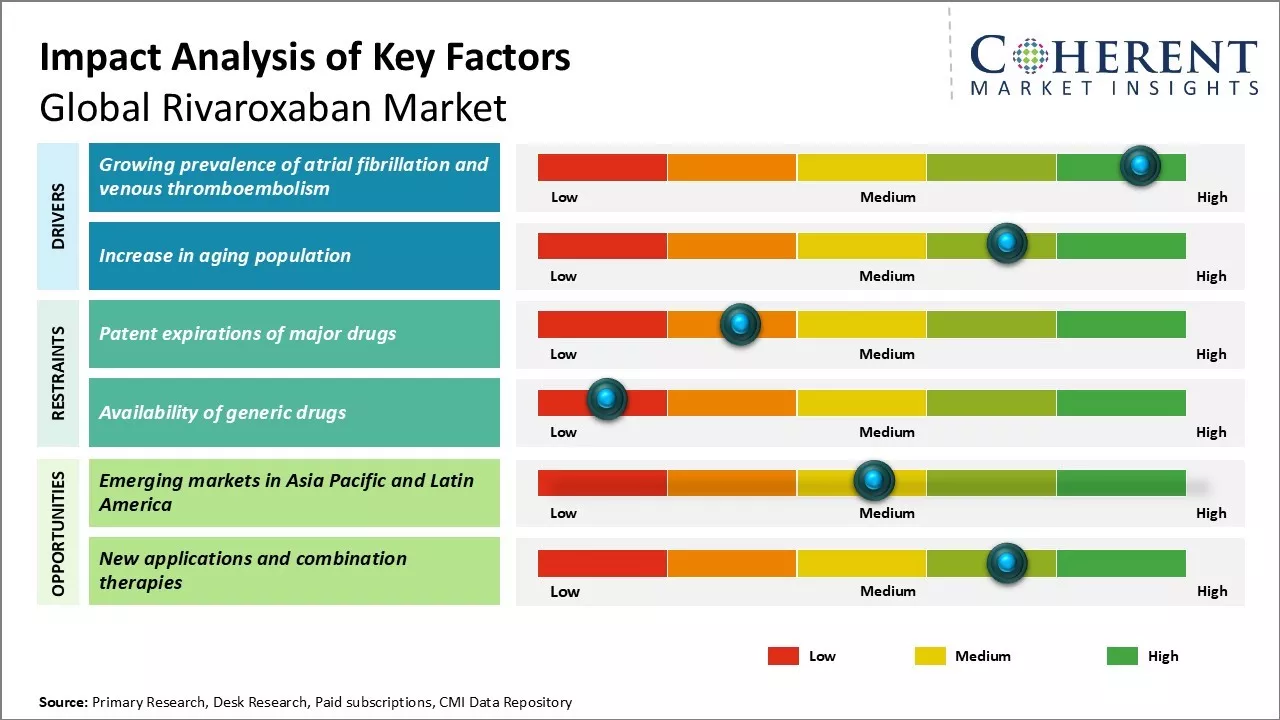Global Rivaroxaban Market is estimated to be valued at USD 17.9 Mn in 2025 and is expected to reach USD 28.3 Mn by 2032, exhibiting a compound annual growth rate (CAGR) of 6.8% from 2025 to 2032.

To learn more about this report, Request sample copy
Rivaroxaban is gaining popularity as an anticoagulant for treating various medical conditions like deep vein thrombosis, pulmonary embolism and reducing the risk of stroke and systemic embolism in patients with non-valvular atrial fibrillation. The market is witnessing steady growth owing to rising geriatric population who are prone to cardiovascular diseases and growing awareness among physicians regarding advantages of rivaroxaban over warfarin. Additionally, patent expiry of major drugs in the next few years and the introduction of generic versions of rivaroxaban will provide opportunities for greater market penetration in low and middle-income countries.
Growing prevalence of atrial fibrillation and venous thromboembolism
The growing prevalence of atrial fibrillation and venous thromboembolism is projected to significantly drive the demand for rivaroxaban in the coming years. Atrial fibrillation and venous thromboembolism have been on a steady rise globally over the past few decades. According to various studies and research papers, the incidence rate of atrial fibrillation is rising rapidly mainly due to aging population globally and rising prevalence of other cardiovascular disorders. Atrial fibrillation is associated with five times higher risk of stroke if left untreated. Similarly, venous thromboembolism including both deep vein thrombosis and pulmonary embolism has been rising steadily over the years. Prolonged immobilization from surgery, injuries or medical conditions increases risks for venous thromboembolism. With sedentary lifestyles and urbanization, rates of obesity have jumped manifold which is another contributing factor for venous thromboembolism.
Rivaroxaban has emerged as one of the preferred options for treatment and prevention of recurrent events of atrial fibrillation and venous thromboembolism due to its efficacy and safety profile. It provides an effective alternative to warfarin with predictable pharmacokinetics eliminating the need for regular blood monitoring. Rivaroxaban has been proven to be as effective as warfarin in reducing risks of stroke in atrial fibrillation with significantly lower risks of bleeds. Similarly, for the treatment of deep vein thrombosis and pulmonary embolism, rivaroxaban has shown benefits over standard therapy of subcutaneous low molecular weight heparins followed by VKAs. The increasing awareness about benefits of rivaroxaban and limitations of warfarin have paved the path for higher uptake of this novel oral anticoagulant. With rising disease prevalence, it can be expected that rivaroxaban demand will multiply in the coming years.
Joining thousands of companies around the world committed to making the Excellent Business Solutions.
View All Our Clients